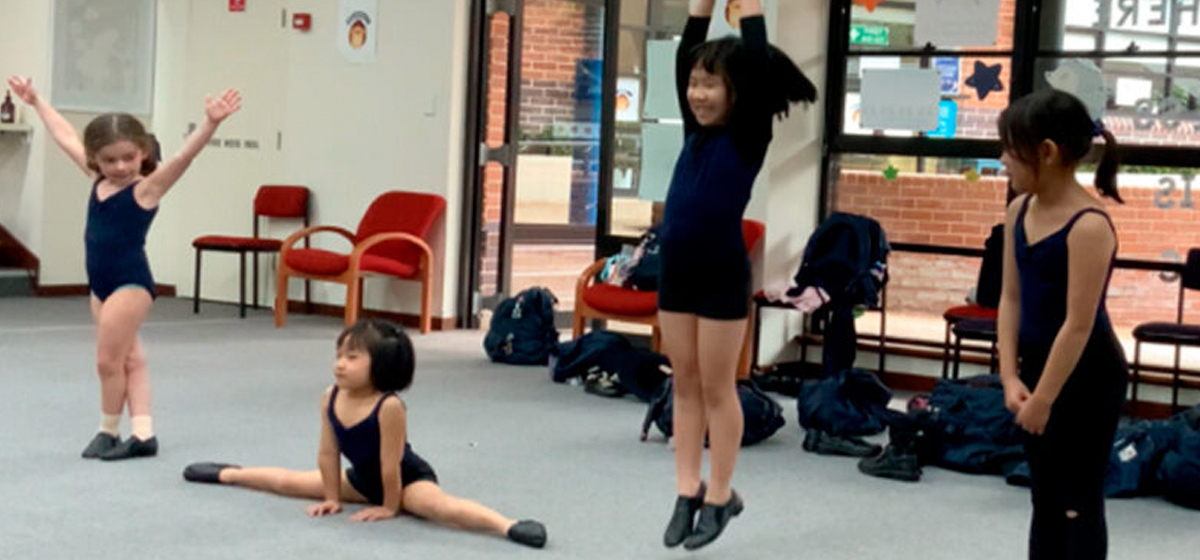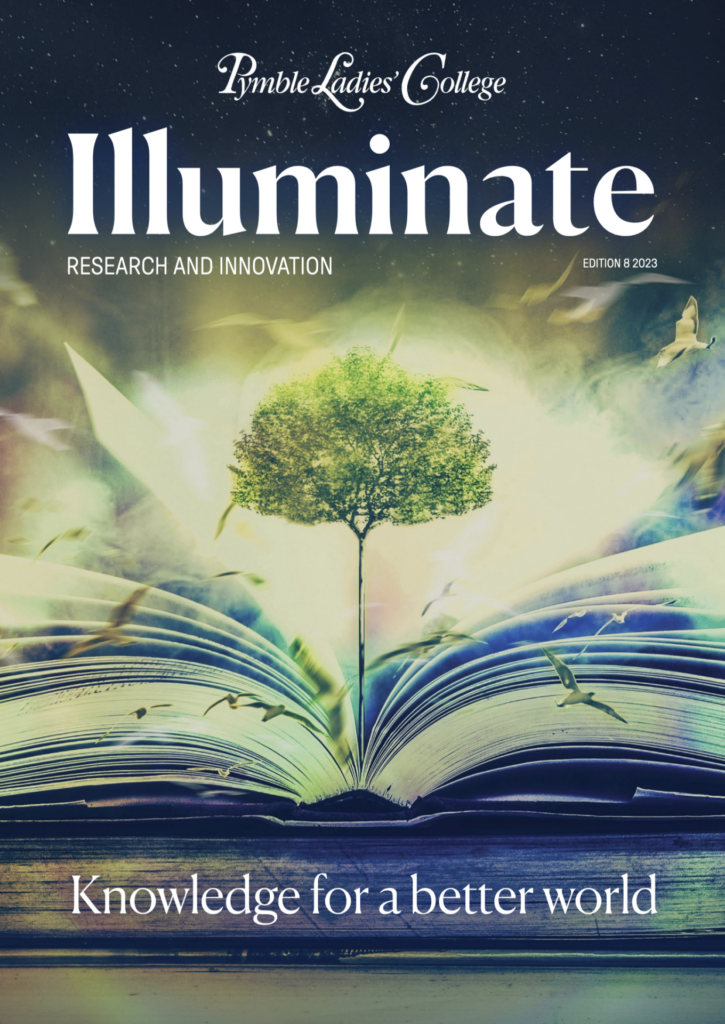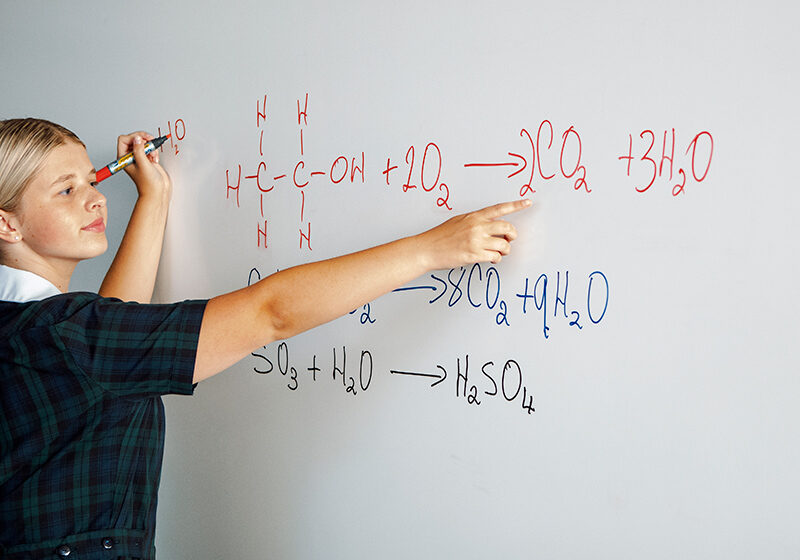
Exploring how the kinaesthetic aspects of creative dance can be used to teach the mathematical concepts of patterns and algebra in a Stage One classroom
Introduction
Current literature advocates that movement and gesture can be used in the generalist classroom to effectively teach a range of key learning areas (Hardiman, Rinne & Yarmolinskaya, 2014; Koff & Warner, 2001; Peppler, Powell, Thompson & Catterall, 2014). This Honours project was developed to further investigate meaningful and innovative pedagogical practices that promote dance integration to deepen student learning experiences. Specifically, this small-scale research study explored how creative dance could be used to teach the foundational mathematical concepts of making and noticing patterns in a Stage One classroom. This Honours project has been guided by the following research question: How can the kinaesthetic aspects of creative dance be used to teach mathematical concepts (patterns and algebra) in a Stage One classroom?
Literature review
1.1 The academic benefits of learning through the arts
The nineteenth and twentieth centuries viewed ‘good’ education as, “the 3Rs – reading, writing and ’rithmetic” (Gibson & Ewing, 2020, p. 22) viewing pedagogical practices such as rote learning and memorisation as essential for classroom learning. Formal education in the 21st century has seen a shift away from traditional teaching strategies as the purpose of education has moved beyond simply training for employment. Instead, emphasis is now placed on the development of “the 4Cs – critical thinking, communication, collaboration and creativity” (Gibson & Ewing, 2020, p. 23; NEA, 2013), a necessary skillset for student learning in the 21st century (Eisner, 2002; Gibson & Ewing, 2020; Silton, 2017). Many educational researchers maintain that these skills can be developed through rich arts experiences and advocate for creativity to be valued as a core skill alongside literacy and numeracy (Gibson & Ewing, 2020; Koff & Warner, 2001). However, despite strong research that demonstrates how engagement in the Arts directly impacts students’ cognitive and academic abilities, the Arts still lack priority in the curriculum and are often not recognised/valued as essential subjects in many schools (Adams & Owens, 2016; Knutson, Okada & Crowley, 2020; Rooney, 2004).
There is a clear divide between the arts and other disciplines in Australia, as the creative arts account for only six to ten per cent of a students’ weekly curriculum requirements and are routinely reserved for co-curricular engagement (NESA, 2018). This is counter to extensive research and advocacy in the field. For example, The National Arts Education Association [NAEA] (1994) maintains that the role of the Arts is “to connect person and experience directly, to build the bridge between verbal and nonverbal, between the strictly logical and the emotional – the better to gain an understanding of the whole” (p. 2). The low profile of the Arts in many educational contexts is noteworthy, as many students are being denied rich arts experiences in their formative schooling years.
International research demonstrates that arts education promotes numerous positive cognitive habits and enriches student learning (Alter, Hays & O’Hara, 2009). Research by Gara and Winsler (2020) found clear evidence that involvement in the arts leads to improved results in other academic disciplines. The researchers specifically explored dance as “an artform that has been relatively understudied in the literature” (p. 445). The findings from their longitudinal study highlighted that students who partook in regular, quality dance classes gained improved academic results in the key learning areas of English and mathematics (Gara & Winsler, 2020). Such findings are supported by many in the field showing the value of deep and continuous participation with the arts and associated academic benefits (Alter et al., 2009; Silton, 2017).
Paradoxically, Bryce, Mendelovits, Beavis, McQueen and Adams (2004) evaluated several school-based arts education programs to address the impact of the arts on students’ academic progress. Bryce et al. (2004) found substantial evidence to support that the arts have a positive effect on student engagement with learning. However, they were unable to obtain significant data to suggest an improvement in academic results. Advocates of the arts propose that these results relate to a myriad of factors including the very nature and quality of the arts programs themselves or the short length of their engagement. Such studies indicate the difficulty in capturing sufficient outcomes from arts programs through ‘conventional correlational studies’ (Eisner, 1972) due to the complex and often unique nature of the arts.
1.2 Integration of the arts
Arts integration can have positive effects on academic performance across a range of disciplines with improved connections to learning, deeper understanding of content and increased memory retention (Dewey, Barnes, Buermeyer, Mullen & de Mazie, 1947; Peppler, Powell, Thompson & Catterall, 2014). Arts integration is often advocated by educational researchers. For example, Elliot Eisner (2002) focuses on arts learning processes and less on artistic product as “the arts can serve as a model for teaching the subjects we usually think of as academic” (p. 169). Arts integration fosters a positive relationship between the learning of the arts and other disciplines. Koff and Warner (2001), for instance, maintain that “integration is the key to enabling students to make connections and to see the relevance of what they are learning in the classroom” (p. 144).
Arts researchers have explored the correlation between arts integration and deeper connections to academic content in specific disciplines often demonstrated by the outputs required in the subject (Adams & Owens, 2016; Knutson, Okada & Crowley, 2020). For example, Vaughan, Harris and Caldwell (2011) assessed the impact of The Song Room Program; a long-term music and arts-based program for children in disadvantaged communities. The study demonstrated that students who took part in the music program received higher NAPLAN results for literacy and numeracy than those who did not (Vaughan et al., 2011). Clearly arts integration in the primary context can lead to improved retention of content with deeper connections to learning and better academic outcomes.
1.3 The relationship between dance and mathematics
Creative dance can be used to teach the foundations of mathematics content by learning through doing (Arias, 2018; Koff & Warner, 2001; Wood, 2008). Embodied learning allows students to use sensorimotor activity in learning, knowing and reasoning (Abrahamson & Bakker, 2016). Educational researchers suggest this form of learning plays a vital role for the teaching of cognitive sciences (Senior, 2016; Werner, 2001) as movement skills grant the ability to “encode spatial relationships in the world around you and this visuospatial skill predicts mathematical competency” (Senior, 2016, p. 2). Research in the field suggests that creative dance as a form of embodied and kinaesthetic learning can help students to develop and use mathematical thinking skills in measurement and geometry including spatial reasoning and awareness, and making and noticing patterns (Arias, 2018; Koff & Warner, 2001; Mannone & Turchet, 2019; Wood, 2008).
The Queensland University of Technology produced the YuMi Deadly Maths program to improve mathematics education for Indigenous and non-Indigenous students by adapting their methods to cater their specific needs (Ewing, Cooper, Baturo, Matthews & Sun, 2010). The program maintains that mathematics involves creating symbols and putting them together to represent the real world (Ewing et al., 2010). The program explores such content through the form of Aboriginal dance and storytelling. As a result of implementation, the Queensland University of Technology researchers found clear success in improved attendance, engagement and academic performance from the student participants. Similarly, Wood (2008) examined how core mathematical concepts can be clarified using movement, especially regarding shape in the areas of number, measurement, chance and data. By learning through doing, students aged five to eight years gained a deeper understanding of target knowledge and showed improvement in their academic results in the directed areas of mathematics (Wood, 2008).
Malke Rosenfeld (2013) developed the Math In Your Feet (MIYF) program upon finding connections between creative dance and primary mathematics as the best way to illustrate ideas to younger students. The program was designed to move beyond rote memorisation and procedure and into the real processes of learning mathematics by using foot-based dance patterns (Rosenfeld, 2013). Students of the program increased their understanding of mathematical geometry topics such as manipulation and analysis of complex patterns, symmetry and mapping through the problem-solving process of creating their own creative dance patterns (Rosenfeld, 2013). The success of this program to learn measurement and geometry through movement is supported by similar studies by Kim, Roth and Thom (2010). These researchers found that learning through gestures has cognitive benefits when applied to geometry, with additional improvements in spatial reasoning and awareness. Engagement in the program enabled students to gain a deeper understanding of geometry and patterns through understanding how their bodies moved in space. These findings demonstrate that children are able to think and learn through their bodies (Kim et al., 2010).
Methodology
2.1 Methodology and theoretical considerations
i) Embodied learning
This arts-based research study is underpinned by embodied and kinaesthetic learning theory within a qualitative paradigm. Embodied and kinaesthetic theoretical concepts have been informed by Gardner’s (1993) multiple intelligences theory, proposing that kinaesthetic intelligence successfully engages the body to improve the processing and communication of information. Embodied learning rejects the sole use of traditional learning methods and instead advocates the incorporation of the physical body to generate deeper learning experiences (Stolz, 2015). It is argued that the kinaesthetic aspects of creative dance experiences can foster improved knowledge acquisition through embodied learning (Blumenfeld-Jones, 2009; Grant, 1985).
ii) Qualitative methodology
Research in the arts, specifically creative dance as a form of embodied learning, lends itself to a qualitative methodology due to the complex artistic processes and artistic expressions used to understand and examine such experiences (Eisner, 2002). Barone and Eisner (2012) advocate that arts-based research is concerned with the “generation of forms of feeling” (p. 7) as such research is “not simply a quantitative disclosure of an array of variables” (p. 7). In this instance, the teacher/researcher has utilised a qualitative case study strategy of inquiry to explore the relationship between creative dance and maths and its relationship to student learning.
iii) Case study
The research design has drawn upon case study (Stake, 1995) as a suitable qualitative research method for this project. Yin (2009) defines case study as an “inquiry that investigates a contemporary phenomenon in depth and within its real-life context” (p. 18). A small-scale case study was designed to explore students’ experiences of a creative dance-based intervention and its impact on mathematical understanding in a Stage One classroom. The study explored the ways in which creative dance, as an embodied learning approach, might improve academic learning experiences in the NSW K-6 Mathematics Syllabus, namely Patterns and Algebra 2 (NESA, 2012). The case study addressed the following syllabus outcomes:
Describes mathematical situations and methods using everyday and some mathematical language, actions, materials, diagrams and symbols MA1-1WM;
Supports conclusions by explaining or demonstrating how answers were obtained MA1-3WM;
Creates, represents and continues a variety of patterns with numbers and objects MA1-8NA (NESA, 2012, p. 95).
2.2 Research design
i) Intervention
An intervention of four to six tailored creative dance sessions was conducted. Each session was approximately half an hour in duration and utilised embodied learning approaches (NESA, 2012). These intervention sessions followed a dance class structure, allowing for physical engagement with the mathematical concepts identified. In lessons one and two, the students explored a range of repeating patterns (AB, ABC, AAB and ABCD) through movement sequencing activities. This included working in small groups to create their own dance-based repeating patterns. Lessons three and four explored growing patterns through movement and body percussion based whole class activities where students used their bodies to count by 2s, 3s and 4s.
ii) Participants
The participants for the research project consisted of a small group of students (five or six participants) aged between six and eight years from a Stage One class.
Findings and discussion
3.1 The arts and academic benefits
National and international literature advocates the integral role of the Arts in the curriculum to promote academic achievement (Eisner, 2002; Rooney, 2004). The ‘Affirmation of continuing commitment to arts education’ report argues that the “study of one or more art forms develops intellect and provides unique access to meaning” (Consortium of National Arts Education Associations, 2001, p. 121). The Stage One participants involved in this study demonstrated academic improvement in their mathematics knowledge after regular involvement in creative dance classes. Pre-intervention benchmarking revealed that six participants could describe patterns using shapes and could successfully continue a range of pattern types by drawing the next shape in the sequence. However, the students were not familiar with the correct mathematical terminology used to identify and determine the type of repeating pattern e.g., AB, AAB, or ABC patterns (NESA, 2012). Two participants displayed a limited understanding of growing patterns and/or were unable to determine and define two-, three- or four-patterns with verbal description such as ‘it goes up by twos, threes or fours’ respectively. Post-intervention benchmarking indicated that by the end of the intervention, all students could successfully identify, create and continue a range of repeating and growing patterns. These findings suggest that improved academic achievement in Stage One mathematics patterns could be related to the arts-based learning experiences embedded in creative dance sessions.
Other important findings from the research study address the argument that through involvement with the Arts, students’ experiences improved creative and higher order thinking, engagement and participation with their learning. The participants in lesson one showed improved creative and higher order thinking throughout the ‘follow the leader’ activity. The girls successfully observed, processed and embodied a range of repeating patterns along with better oral communication of the pattern type they were performing. As an example, the teacher/researcher performed a jump and a clap as an AB pattern example. Students repeated back the movement and verbalised “A” and “B” with each corresponding movement. Subsequently, all students displayed an improved understanding of AB, AAB and ABC patterns. Similar research by Gara and Winsler (2020) found strong evidence that involvement in the arts particularly creative dance leads to improved results in other academic disciplines by improving the students’ cognitive abilities, interest and engagement. Gara and Winsler’s (2020) longitudinal study found that students who took part in regular, quality dance classes experienced higher English and mathematics scores.
3.2 Integration of the Arts
The beneficial role of arts integration in learning was another significant finding of this small-scale study. All students deepened their knowledge of repeating and growing patterns when engaging with the content through embodied learning approaches. For example, in lesson two, the girls in groups of four were asked to create their own repeating pattern sequences. One group formed an embodied ABCA pattern whereby Student A performed a star jump, Student B did the splits, Student C tried a pencil jump, and Student D did a star jump as per the ABCA pattern continuum (see Figure 1). Clearly, this dance-based mathematics activity allowed the students to connect their body and mind when processing, determining and communicating different pattern types thus deepening their comprehension of the specific mathematical pattern.
The effectiveness of combining dance and mathematics to better understand patterns is supported by relevant literature in the field particularly that of Malke Rosenfeld (2013). Rosenfeld’s Math In Your Feet (MINYF) program utilises developed foot-based dance movement to explicitly teach mathematical geometry concepts through dance. As in the current study, students involved in the MINYF program displayed deepened knowledge and understanding of the pedagogical content.
There was a clear improvement in key mathematical thinking skills with the use of kinaesthetic intelligence to identify and create patterns through dance. For example, when exploring repeating patterns in the group task in lesson two, the students were asked to identify the pattern type being performed by their peers. The girls were only provided with embodied patterns through movement, that is, without written or verbal prompts. All the participants used kinaesthetic intelligence to successfully determine and identify the embodied patterns. Two students even stood up and copied the pattern being presented to assist with their response. These findings showcase that the Stage One students deepened their mathematical content knowledge and cognitive thinking skills by engaging with the concepts through creative dance movement activities. Research supports the effectiveness of arts integration in the foundational years of learning. A comparable study by Lai Kuen and Hunt (2006) investigated the impact of a creative dance unit on a class of Year One students’ use of kinaesthetic intelligence to solve problems in another academic discipline. Their research confirmed that by learning through creative dance, the children displayed higher order thinking through problem-solving and creativity. Likewise, the teacher/researcher of the current project found that learning through moving can engage higher-order cognitive thinking that extends beyond rote memorisation.
Renowned dance educator, Judith Hanna (2002) contends that creative dance experiences can foster the development of sensory awareness, self-confidence and intellectual engagement; skills necessary for young learners to experience academic achievement in the 21st century. One student in particular, Kylie* (*pseudonym used) displayed limited intellectual engagement with growing patterns in the pre-intervention benchmarking. Her number sense was lacking and her interest in written mathematical work was low. At the conclusion of the intervention, Kylie was able to showcase a proficient understanding of growing patterns and skip counting when communicating through the form of creative dance. To highlight this improvement, in lesson three, the students engaged in a dance-based game where they used body percussion such as claps and stomps, to skip count by twos, threes and fours. As a result of engaging with mathematical concepts through an embodied approach, Kylie successfully counted by twos, threes and fours through creative movement. Later in the focus group interview, Kylie stated that, “it didn’t even feel like I was doing maths!” Such comments indicate that the participants self-confidence and intellectual engagement improved when engaged in mathematical learning via a kinaesthetic form such as dance.
3.3 The relationship between the kinaesthetic aspects of creative dance and patterns and algebra in Stage One mathematics
Findings from this project support growing evidence into the nexus between mathematics and the kinaesthetic aspects of creative dance. When initially informed that they would be learning about maths in a dance class, the participants were sceptical. Reactions from the Stage One learners ranged from shock, concern to utter disbelief. In fact, one student remarked, “You can’t mix dance and maths!” At the conclusion of the dance warm-up to begin the intervention, the teacher/researcher posed the question, “What maths did you find in the dance warm-up?” Upon reflection, the girls discovered that almost every moment in the simple dance warm-up could be related to foundational mathematics concepts. For example, the students successfully identified whole numbers when counting the timing of the movement, space and geometry when moving their arms and feet, and patterns in repetitive movement. Such observations clearly establish the relationship between dance and mathematics thereby providing a solid foundation in which students can interpret and engage with the world around them (Alter, Hays & O’Hara, 2009).
The students involved in the current study were able to make deep connections between the two disciplines, mathematics and dance, and demonstrate higher order thinking and creative thinking processes as a result of the intervention.
Conclusion
In conclusion, the findings from this small-scale study highlight the significant impact of arts integration to promote learning, specifically in the field of creative dance. These findings align with other arts-based research proposing that creative dance can assist students to develop competency and confidence in using mathematical thinking skills (Mannone & Turchet, 2019; Wood, 2008). As noted, there is still limited research into the impact of dance-integrated teaching for academic achievement in the areas of number and algebra, specifically making and noticing patterns. This study provides some evidence that such integration can enhance student knowledge acquisition and understanding. Although it included a small sample size, the findings offer a comprehensive and deep understanding of the impact of the creative dance on the participants’ learning. It is hoped that these findings could be revisited by pre-service and classroom teachers to foster positive educational outcomes for young learners through authentic arts integration, such as dance/mathematics. What remains clear is that students can experience improved academic outcomes in the learning of foundational mathematical concepts by engaging with the content through the form of creative dance.





